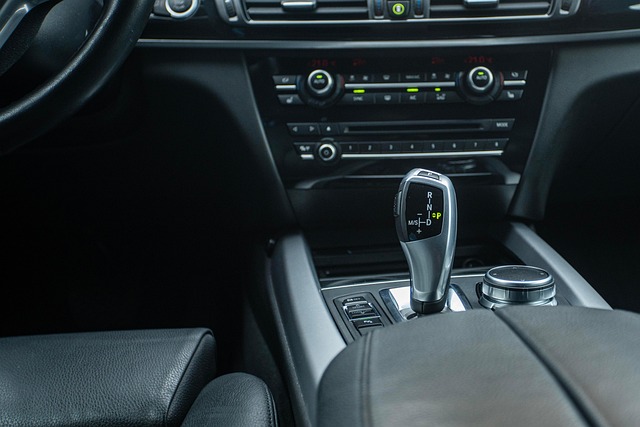Looking to register your car in California? This comprehensive guide walks you through the entire process, ensuring a smooth experience. From understanding eligibility requirements and gathering essential documents to completing crucial DMV VIN verification and paying registration fees, we’ve got you covered. By the end, you’ll have your California vehicle registration papers in hand.
- Understand Eligibility Requirements for Car Registration
- Gather Necessary Documents for Vehicle Registration
- Schedule and Complete DMV VIN Verification
- Pay Car Registration Fees at the DMV
- Receive Your California Vehicle Registration Papers
Understand Eligibility Requirements for Car Registration

Before you begin the registration process, it’s crucial to understand the eligibility requirements set by the California Department of Motor Vehicles (DMV). To register your car in California, the vehicle must meet certain criteria, such as being legally imported and not having any outstanding safety or emissions violations. Additionally, the DMV requires a thorough vin verification, which involves checking the Vehicle Identification Number (VIN) to ensure it matches the vehicle’s actual make, model, and year. This process can be completed through a standard vin inspection at a designated DMV location or, for added convenience, with a mobile vin verification service that comes to you.
For out-of-state vehicles, specific documentation may be needed to prove ownership and eligibility for registration. If your car has been recently purchased from an out-of-state dealer, ensure you have the necessary paperwork, including the title, bill of sale, and any other required documents. Moreover, if your vehicle is a classic or custom build, there might be additional guidelines and inspections to satisfy historic vehicle registration requirements.
Gather Necessary Documents for Vehicle Registration

Before you begin the registration process, it’s crucial to gather all the essential documents for vehicle registration in California. This includes your vehicle’s Registration Application (Form DVF 14), which can be obtained from the California Department of Motor Vehicles (DMV). Additionally, you’ll need proof of insurance, a valid driver’s license, and the Vehicle Identification Number (VIN) verification. The VIN is a unique code that identifies your car, and it’s typically located on the vehicle’s registration label or in its engine compartment. For added convenience, consider using a mobile vin verifier to quickly and accurately obtain this information.
A key part of the preparation process involves ensuring your car passes the DMV’s safety and emissions tests. Some vehicles may also require additional documentation, such as proof of ownership if the title is not in your name or records of any recent repairs. It’s essential to check with a mobile vin inspection service for any specific requirements related to your vehicle’s make and model, as these can vary. Properly preparing these documents will streamline the registration process at your local DMV office.
Schedule and Complete DMV VIN Verification

After submitting your registration application and required documents at the California DMV, the next step is crucial—completing the DMV VIN verification process. This involves scheduling a time to bring your vehicle in for an inspection. Many individuals opt for convenient alternatives like using a mobile vin verifier, which allows for on-site or remote vin inspections, saving time and effort. During this verification, a DMV inspector will examine your car’s unique Vehicle Identification Number (VIN) to ensure it matches the information provided in your documents. This step is vital to confirm the vehicle’s authenticity and prevent fraud.
The inspection covers various aspects, including checking the VIN plate attached to the vehicle against the one recorded in the registration system. This process helps maintain California’s robust vehicle registration database by ensuring accuracy and deterring potential scams. For a seamless experience, ensure you have all necessary paperwork and arrive on time for your scheduled DMV vin verification appointment.
Pay Car Registration Fees at the DMV

To complete the registration process, you’ll need to pay the required car registration fees at your local California Department of Motor Vehicles (DMV) office. The amount you pay will depend on several factors, including the type and age of your vehicle. For most cars, expect to pay around $50 for a base registration fee plus additional charges based on emissions testing and other factors.
One convenient option available in California is the mobile vin verification service, which allows you to get important DMV tasks done without visiting a physical office. A mobile vin inspector can perform the necessary VIN (Vehicle Identification Number) checks and ensure your car meets all requirements before registration, making the process more efficient and accessible for many drivers.
Receive Your California Vehicle Registration Papers

After completing your vehicle purchase, it’s time to receive your California Vehicle Registration Papers. These documents are essential for legalizing your car’s ownership and operation within the state. You can obtain them from the California Department of Motor Vehicles (DMV) in various ways. One convenient method is to request a mobile vin verification or use a mobile vin inspection service, which allows you to get your registration papers without visiting a DMV office.
This process involves verifying the vehicle’s identity using its unique Vehicle Identification Number (VIN). By providing your VIN to a trusted mobile vin verifier, you can ensure that all necessary information is accurate and up-to-date. Once verified, the DMV will issue your registration papers, completing your car registration process smoothly and efficiently.
Registering a car in California involves understanding eligibility requirements, gathering essential documents, scheduling and completing a DMV VIN verification, paying registration fees, and receiving your vehicle registration papers. By following these straightforward steps and ensuring all necessary paperwork is in order, you’ll be on your way to legally owning a car in the Golden State. Remember, a smooth process begins with proper preparation!
